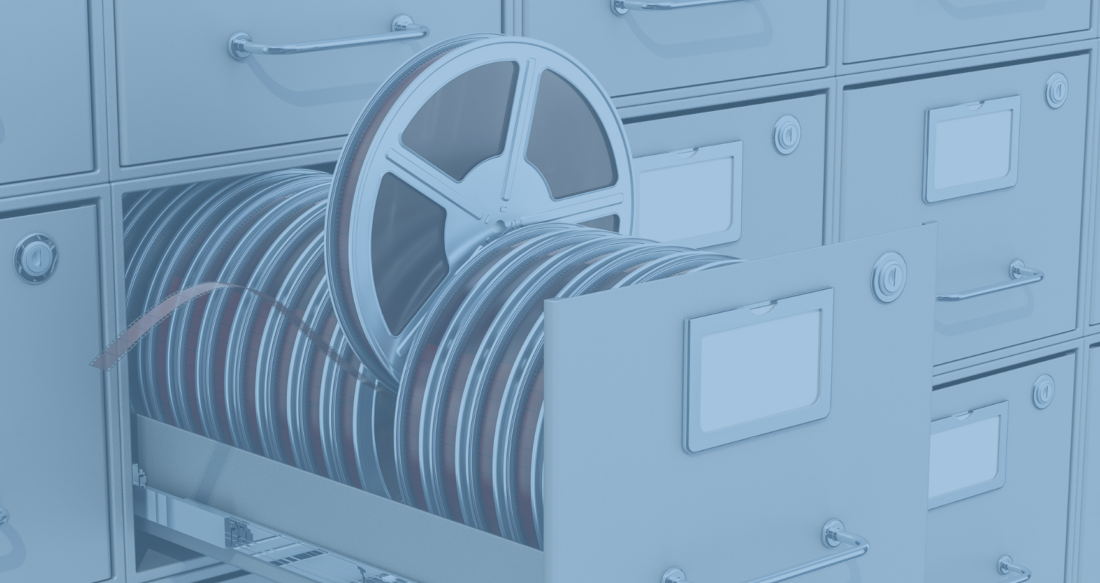
M&E Journal: Content is Still King
Are we living in a golden age of content?
For consumers, quite possibly yes, with more viewing options and greater access to more titles than ever. For studios and content owners, the answer is not always as clear.
The global demand for diverse media titles across multiple platforms in multiple formats is increasing at an accelerated rate. Yes, higher content demand creates more business for everyone, but it can also fill libraries to almost breaking point.
The sheer volume of titles currently in many studios’ catalogs can make it difficult for them to manage, locate, deliver — and monetize — their content.
Combine this issue with simultaneously occurring industry trends such as compressing timelines, complex delivery requirements, and heightened customer expectations and it becomes clear new types of content management and workflow orchestration are needed.
 This creates challenges but also significant opportunities for media supply chain partners like Ateliere Creative Technologies (formerly Ownzones).
This creates challenges but also significant opportunities for media supply chain partners like Ateliere Creative Technologies (formerly Ownzones).
The content landscape has undergone a series of changes over the last 15 years, moving from physical media, such as film and tape, to digital and file-based content. All this occurred rapidly, and the development of efficient and elegant infrastructure technologies couldn’t keep up.
Many large enterprises built their own infrastructure around proprietary storage library environments, tying up a lot of capital investments in the process. However, these solutions typically involved manual processes and didn’t enable the levels of content management or flexibility necessary to keep pace with the rapid proliferation of titles and growing consumer demand.
The result: thousands, if not tens of thousands, of files, all in different places and different states of readiness. A studio may have 60 files of a movie, but they might not know what each of those 60 files represents. Is it the Spanish language version for cinema versus Spanish language version for television? Is it 1080P, 4K, PAL or NTSC, REC 709? The optimal solution is for content owners to regain control of their digital supply chain by bringing it in-house and onto a cloud platform.
With cloud-based orchestration, they can realize the benefits of fully auto- mating the process of managing, repackaging, and delivering content. These include reducing the transcoding time for a title by 35 times and reducing library storage footprint by up to 75 percent — all contributing to total annual savings of millions of dollars.
Once content assets are consolidated into a single in-house cloud location, studios can perform an archive discovery process to comprehensively analyze each of the titles in the library, their formats, and state of readiness. They can identify the many duplicates in the library as well as the many assets that may have become “orphaned” over time.
All these different files need to be matched together.
This process can be streamlined by using the Interoperable Master Format (IMF), the SMPTE standard for enabling efficient content management and distribution.
The beauty of IMF is that you’re able to easily find the most common version and make that your master track. Only the differences need to be saved for the other versions. Creating an IMF library of total assets allows you to catalog all titles and group different localized versions with related metadata into single easy-to-man- age packages.
Really, it’s all about the metadata — the data that describes other data. For any title, opening credits are usually different by region, the title is different, credits like executive producer will be different, and the same goes for the closing credits, audio, subtitles, and any tex- ted pieces or changes made for regional compliance.
All the scenes in the middle tend to be the same, or common, and we’re able to track all this in a single package using rich metadata.
We can create virtual versions in a content playlist, which tells the system to play different pieces depending on delivery requirements. For each alternate version, we’re only saving the different elements and then pointing to the common elements to bring all those files together into one package. Now, they don’t get lost as easily as they did before, and the whole library is more organized and searchable.
Customer response times are also increased. In many cases, it’s now possible to take an order, turn around a package and get it to a client in less than 24 hours when traditionally that process took several months.
Now, a library is set up for maximum content monetization. When an order is received, the studio knows exactly which version of a title is available. If a requested version is not available, they can easily create one without much human intervention, manipulation, or expense.
Using a cloud-based platform also eliminates the need to invest in physical storage, allowing owners to flexibly shift their costs to operating expenditures (OPEX) rather than a capital (CAPEX) model.
Complementing the newer cloud solutions, like Ateliere Connect, are advanced artificial intelligence (AI) tools that can scan content to understand its layout and formatting, and then accelerate the traditionally long and manual process of content conforming and localization editing.
By automatically identifying specific types of scenes or video elements and highlighting them on a timeline view, operators can focus their efforts primarily on the scenes that need adjustment, saving companies time and money.
 AI technology can also help automate all the workflow steps in a single platform.
AI technology can also help automate all the workflow steps in a single platform.
For example, automated QC using AI can detect content issues faster and with a higher accuracy rate — more than 90 percent — compared to traditional manual QC. Cloud platforms also support a range of business process management (BPM) functions for studios and content owners.
For example, the Ateliere solutions are provisioned for automated deliveries to more than 200 global endpoints, including all major streaming platforms— Netflix, Amazon, Disney Plus, HBO, Hulu, Apple, Viaplay, and others.
The platform’s APIs and plugin architecture enable integration with the studio’s multitude of BPM systems.
This two-way data exchange automates ordering, order tracking, inventory management, billing, rights management, contracts and legal issues, creating a fully orchestrated workflow where everyone involved in the process is always fully informed and traditionally manual functions are removed.
This new way of managing and monetizing content will allow our industry to adapt for future growth more easily.
The future still holds many uncertainties— the state of the pandemic, increasingly hybrid workforces leading to more people spending more time at home, changes to traditional content distribution models such as theatrical and streaming platform release timeframes and whatever else comes our way.
One fact we do know for certain is that the demand for content will continue to increase exponentially. For anyone involved at any step of the digital media supply chain, success will hinge on embracing change and adopting new technologies.
** By By Bill Admans, COO, Ateliere Creative Technologies **
=============================================
“>Click here to download the complete .PDF version of this article
Click here to download the entire Winter 2021 M&E Journal
